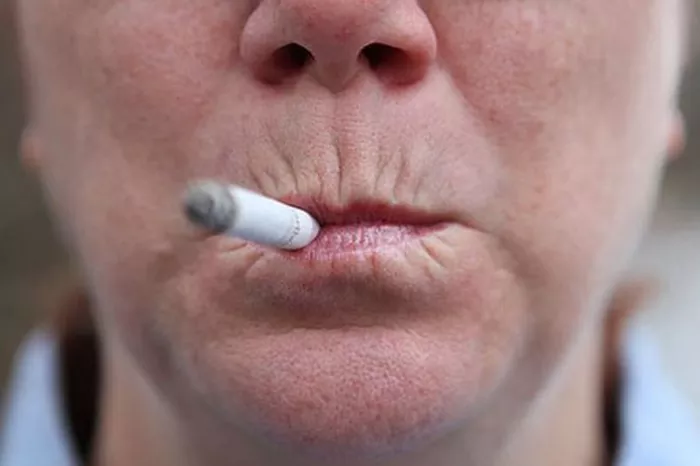Smokers lines, those fine wrinkles around the lips, are a common concern among individuals who smoke or have been exposed to prolonged sun damage. These lines can prematurely age the face, detracting from a youthful appearance. Fortunately, several effective treatments are available to minimize or eliminate smokers lines. Each treatment option varies in effectiveness, invasiveness, and longevity, allowing individuals to choose the best approach based on their preferences and severity of lines.
1. Dermal Fillers
Dermal fillers have revolutionized the treatment of fine lines and wrinkles, including smokers lines. Typically made from hyaluronic acid, a substance naturally found in the skin, dermal fillers work by adding volume to the treated area. This helps to smooth out lines and creases, providing a more youthful appearance.
The procedure involves injecting the filler directly into the lines around the lips. Results are immediate and can last from six months to over a year, depending on the type of filler used and individual factors such as metabolism and lifestyle.
One advantage of dermal fillers is their versatility. They can be used to address mild to moderate smokers lines effectively. The treatment is relatively quick, usually taking less than an hour, and requires minimal downtime. Common side effects include temporary redness, swelling, or bruising at the injection site.
2. Laser Resurfacing
Laser resurfacing is another popular option for treating smokers lines. This technique uses concentrated beams of light to precisely remove layers of skin, encouraging the growth of new, smoother skin cells. Laser resurfacing can be ablative or non-ablative, with ablative lasers being more aggressive but offering more dramatic results.
Ablative laser treatments, such as carbon dioxide (CO2) lasers, work by vaporizing the outer layers of damaged skin. This stimulates collagen production and improves the appearance of fine lines and wrinkles, including smokers lines. Non-ablative lasers, like erbium lasers, heat the underlying skin layers to promote collagen remodeling without damaging the surface.
Laser resurfacing typically requires multiple sessions for optimal results, spaced several weeks apart. Downtime can vary depending on the intensity of the treatment, ranging from a few days of redness and swelling to a week or more of recovery for ablative procedures. However, the results can be long-lasting, with improvements visible for several years with proper skin care and sun protection.
3. Botox
Botulinum toxin type A, commonly known as Botox, is a neurotoxin that temporarily relaxes the muscles responsible for causing dynamic wrinkles, such as smokers lines. By injecting small amounts of Botox into specific muscles around the lips, the lines become less noticeable as the muscles relax.
Botox treatments are quick, usually taking about 10-15 minutes, and require no downtime, making them a convenient option for those with busy schedules. Results typically appear within a few days to a week and can last for three to four months before gradually wearing off. Regular maintenance treatments are necessary to sustain the results.
While Botox is effective for treating dynamic wrinkles, it may not be suitable for deep, static lines that are present even when facial muscles are at rest. Common side effects include temporary bruising or mild headache, which typically resolve quickly.
See also: 9 Effective Strategies to Get Rid of Lines Around Your Lips
4. Chemical Peels
Chemical peels involve applying a chemical solution to the skin to exfoliate and eventually peel off the top layers. This process stimulates cell turnover and collagen production, resulting in smoother, more even-toned skin. Chemical peels can be superficial, medium, or deep, depending on the depth of penetration and desired results.
Superficial peels, such as those containing alpha hydroxy acids (AHAs) or beta hydroxy acids (BHAs), gently exfoliate the outer layer of the skin, improving the appearance of fine lines and enhancing skin texture. Medium and deep peels, such as those containing trichloroacetic acid (TCA) or phenol, penetrate deeper into the skin to target more pronounced wrinkles and skin damage.
The downtime associated with chemical peels varies depending on the depth of the peel. Superficial peels may cause mild redness and peeling for a few days, while deeper peels can result in several weeks of recovery with significant peeling and redness. However, the results of a chemical peel can be transformative, with improvements in skin texture, tone, and the appearance of smokers lines lasting for several months to years with proper skin care.
5. Microneedling
Microneedling, also known as collagen induction therapy, is a minimally invasive procedure that uses tiny needles to create controlled micro-injuries in the skin. These micro-injuries stimulate the natural healing process, promoting collagen and elastin production. As the skin repairs itself, it becomes firmer, smoother, and more rejuvenated.
For smokers lines, microneedling can be combined with serums or growth factors to enhance results. The procedure is relatively comfortable, with topical numbing cream applied beforehand to minimize discomfort. Microneedling sessions typically last about 30 minutes to an hour, depending on the size of the treatment area.
While microneedling is effective for improving skin texture and reducing fine lines, multiple sessions are usually required for optimal results. Downtime is minimal, with mild redness and swelling lasting a day or two. Results become noticeable within a few weeks as collagen production increases, with continued improvements over the following months.
Conclusion
Choosing the best treatment for smokers lines depends on individual preferences, skin type, and the severity of the lines. Dermal fillers offer immediate results with minimal downtime, while laser resurfacing and chemical peels provide long-lasting improvements in skin texture and tone. Botox is effective for dynamic wrinkles, and microneedling stimulates collagen production for smoother, rejuvenated skin.
Consulting with a qualified dermatologist or plastic surgeon is crucial to determine the most suitable treatment based on your specific concerns and goals. With advancements in cosmetic dermatology, effective solutions are available to help minimize the appearance of smokers lines and restore a youthful, refreshed appearance to the lips and surrounding areas.
Related topics:
All You Need To Know About Thread Facelifts
What To Do For Lines Around Lips?
Top 6 Ways To Remove Neck Lines


